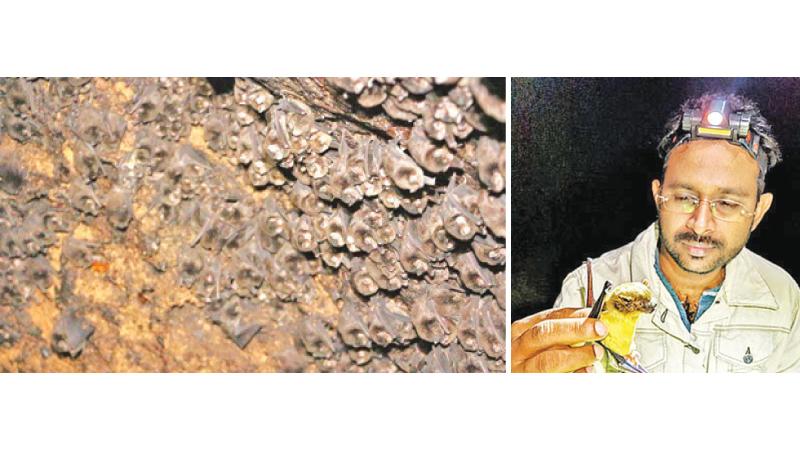
Sri Lanka counts 31 bat species officially. Recently, a new one was identified using DNA studies, the team has named it miniopterus philippi.
The newly discovered bat is a medium-sized cave-dweller found in Sri Lanka and India in the long-winged bat family. It was previously misidentified as the Eastern bent-winged bat (Miniopterus fuliginosis). The team including Tharaka Kusuminda, PhD candidate at University of Ruhunu realised that it was a new species altogether. This does not change Sri Lanka’s bat species number count, since it is only a ‘reclassification’.
In Sri Lanka, the largest is the flying fox (Pteropus medius). The smallest is the least pipistrelle (Pippistrellus tenuis). The Indian flying fox is the most commonly seen (Pteropus giganteus) variety.
Professor of Zoology, Wipula Yapa said in an interview with the Sunday Observer: “Habitat loss is a very bad problem facing bats. Large numbers of bat roosting and foraging habitats have been lost lately. Clearing forests and renovation of old buildings that are occupied by bats can also affect them.”
“Bats generally prefer fruits such as Mangoes, Rambutan, banana and so on.” He continued: “Some people believe that meat of the bat can cure illnesses such as asthma and anaemia, so they are hunted for bushmeat” Sri Lanka woolly bat or Kerivoula malpasi was previously the last species to be formally described.
Some bats can be seen in old temples and buildings such as rhino’s leafnose bat, Schneider’s horseshoe bat and black bearded tomb bat. They haunt many such sites such as inside trees, old buildings, and so on. And of course they prefer to dwell close to where there is ample food source.
The specimens for the newly discovered species were collected from an Idulgashinna cave in Uva Province. The species has also been observed in the Kegalle district.
